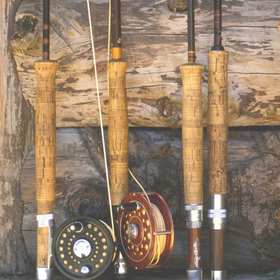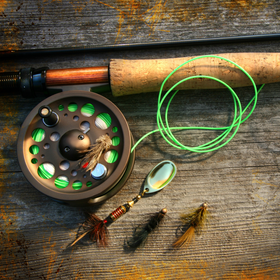Midges are probably the most overlooked food source of trout fly fishing. It is understandable I suppose, they have no season, no cloud-like hatches, no recognizable features. In short, they have no charisma, yet they are the blue collar trout food. Steady, reliable, and workmanlike, providing a huge chunk of a trout’s annual diet, they play a vital role in the health of a river’s or lake’s trout population. And yet, they are often ignored by trout fly fishers.
Part of the reason for this omission is their size; midges are tiny, not always but usually. The category consists of hundreds of differing species of insects, some not even closely related. They can cover a huge gammut of colors, characteristics and species. Many tiny little mayflies, baetis and various other insects are often called midges just because they are so small that you can't see them. But Chironomidae (chironomids) are in the order Diptera, which is a "true fly" like a mosquito or housefly that has two wings. Insects in the Chironomidae family are always considered midges, even if they are big. A #28 anything is considered a midge, but any size chironomid is a midge as well.
 - Midge Pupa (photo: www.troutnut.com)
- Midge Pupa (photo: www.troutnut.com)
Many fly fishers have an inherent fear of going small. Light tippets snap easily, fishing in the breeze is difficult. Long casts are frustrating, even tying the tiny fly on the tippet is difficult, especially in the winter when midges are usually the only game in town. Well for the last difficulty, try the EZ-TY Junior, it will eliminate much frustration threading those light tippets. Most anglers will use 6x or 7x tippet, or (gulp) 8x tippet at about 1# break strength.
The midge pupa is probably the most important stage of the midge. Midges hung up in the surface film, Suspended Midge, provide easy pickings for trout. As for emerging midges, try the Chironomid Pupa. It is not uncommon to see frenzied trout feeding on something we can’t see; this is the time to try these. Tailwaters often provide excellent winter time hatches of midges due to their relative constant temperatures. Midges tend to emerge in pools or other slack water areas.
 - Midge Adult, female (photo: www.troutnut.com)
- Midge Adult, female (photo: www.troutnut.com)
The larva stage is often overlooked, and that is a shame. The BH Zebra Midge and the Disco Midge have earned their place in my vest as constant producers. While the midge larva is a slim meal at best they are prevalent, and they are mobile in this larva stage. Dead drifting a midge is often a great searching technique that produces fish time and again. Any time fishing is slow, going small is often the answer, and is the first thing I try in the winter. Rig a small split shot a foot or so above the fly to get it down in the fish’s cone of vision.
 - Midge Adult, male (photo: www.troutnut.com)
- Midge Adult, male (photo: www.troutnut.com)
In lakes, you must provide the retrieve or action yourself. Easily the most common mistake to make is fishing these too fast. In fact I don’t know if it is possible to fish it too slow. A twitch and then a rest is all you need. Sometimes it can try the patience but the reward is big lake fish on tiny flies.
The careful observer can view the mating process, often time the males will cluster the female, creating a life raft of delicacies for the lucky trout. This process is best imitated with the Griffith Gnat or the CDC Griffith Gnat. adult midge pattern covers not only midges but also tiny mayflies, anytime surface action is in progress and you can’t see the hatch the midges are probably the catalyst, although tiny Baetis hatches are often confused with midges. It really does not matter as the adult midge pattern will cover both quite nicely.
It takes loads of patience and a delicate hand but landing a monster trout during one of these tiny hatches is a reward that is hard to duplicate. And for winter dry fly fishing nothing is equal to the midge.




